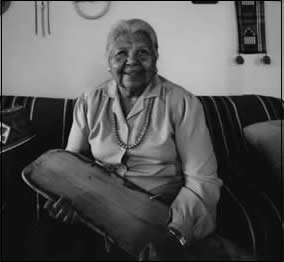Santa Fe Living Treasures – Elder Stories
<<Back to Treasures Index
Agnes
|
Agnes DillWith a father from one Northern New Mexico pueblo, Laguna, and a mother from another, Isleta, Agnes Dill spent her early years in both places, before boarding at the Albuquerque Indian School between the ages of 8 and 16. As a young teen-ager she also worked as a domestic helper, an unpleasant experience that helped shape the course of her life. “It was such a dreary way of earning a living,” she reflected many years later. “I knew there were other girls like me, who were qualified to do other things. So while I was there washing dishes or sweeping floors, I made a vow to myself--to do something for women’s betterment in education and employment fields.” It was a vow she kept. Most young Indian women in those days--the 1920s and ‘30s--were brought up to be reticent, not outspoken, and to become wives and mothers, staying in the home. But Agnes’s parents prized education and encouraged her to become a teacher. She earned a degree from New Mexico Highlands University, then was hired by the U.S. Bureau of Indian Affairs to teach at four different schools in Oklahoma from 1937 to 1948. She married an Anglo, Clarence Dill, and together they owned and operated the Fort Cherokee Indian Museum and Trading Post in Vinita, Okla., for 17 years. But when her husband developed emphysema, they moved to New Mexico in 1965 for his health. They lived at Isleta Pueblo until his death in 1970. Agnes then had to decide what to do. Both the women’s movement and the American Indian movement were gaining momentum in the early 1970s, and Agnes felt that both energies should be combined in a special organization for native women. And she remembered her vow. “I saw that Indian women weren’t getting their fair share of education and employment, and thought back to myself and thought maybe there’s something I can do to help.” The North American Indian Women’s Association held its first conference in 1971, and Agnes was there. In 1973 she became the group’s president, a post she held for two years. During her term she traveled and spoke throughout the United States and parts of Canada. She initiated a study for setting up a Job/Talent Bank for Indian Women. She helped pull together in Albuquerque a Southwest business women’s conference, to which the director of the Women’s Bureau of the U.S. Department of Labor came to advise native participants about securing employment and marketing arts and crafts. She went to Washington, D.C., for presidential briefings and sessions on non-traditional occupations.
|
